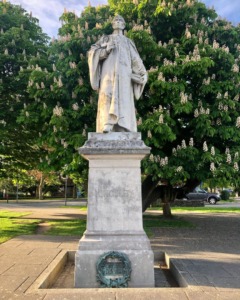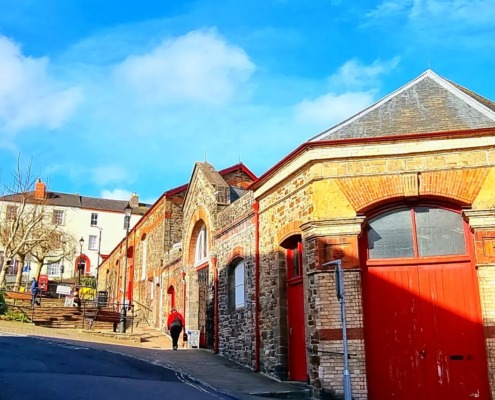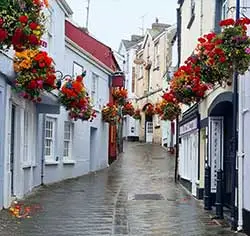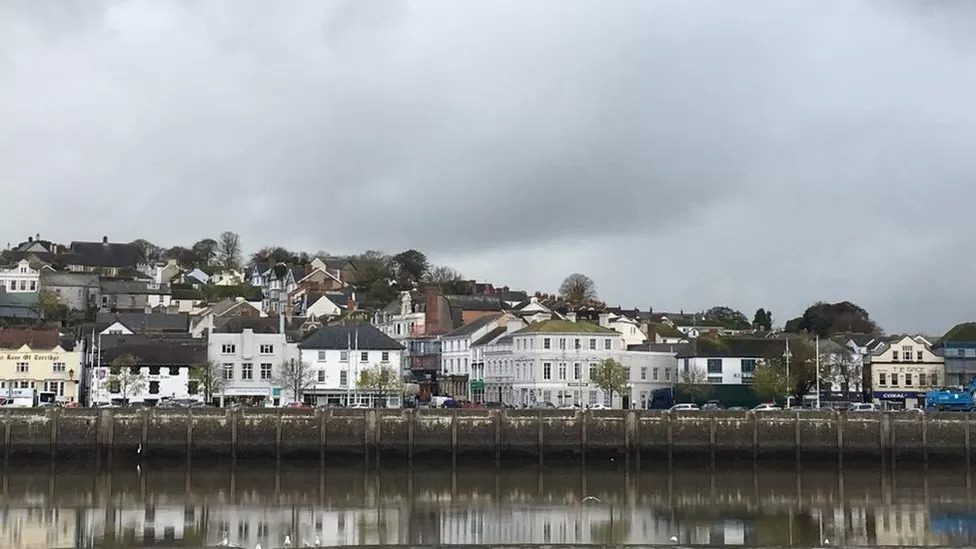Bideford, a small town nestled on the banks of the River Torridge in Devon, England, has a long and fascinating history. But perhaps one of its most interesting and enduring features is its nickname: “The Little White Town.”
Visitors to Bideford will quickly notice the town’s charming and beautiful whitewashed buildings, which are a defining feature of its architecture. But why is Bideford called “The Little White Town”?
In this blog post, we’ll dig into the town’s history to uncover the origins of this beloved nickname and explore what makes Bideford such a special place to visit and explore.
| Key Takeaways |
|---|
| Bideford is a small town in Devon, England known for its charming whitewashed buildings and is called “The Little White Town.” |
| The town’s name means “by the river” and “crossing point” in Celtic, with a rich and complex history dating back centuries. |
| Bideford has been associated with notable events and figures related to its names, such as the wool trade and shipbuilding. |
| The nickname “The Little White Town” originated from Charles Kingsley’s book “Westward Ho!” due to the town’s distinctive whitewashed buildings. |
| Notable landmarks in Bideford include the Long Bridge, Pannier Market, and St. Mary’s Church, all of which offer insight into the town’s history and heritage. |
| While there are several other theories and misconceptions about the town’s nickname, the most widely accepted explanation is its distinctive whitewashed buildings. |
History of Bideford’s Name
The history of Bideford’s name is a fascinating tale that stretches back centuries. The town’s name is believed to have Celtic origins, with the prefix “bide” meaning “by the river” or “by the water” and the suffix “ford” indicating a crossing point.
Over the centuries, the town’s name has undergone several changes. In the Domesday Book of 1086, it was recorded as “Bedeford,” and by the 13th century, it had become “Bydeford.” In the 16th century, the spelling “Bideford” was adopted, and it has remained unchanged ever since.

Throughout its history, Bideford has been associated with a number of notable events and figures related to its name. Many of the town’s residents were involved in the production and trade of wool, and the town’s name was well-known throughout the region.
In the 17th and 18th centuries, Bideford became an important centre for shipbuilding and maritime trade. The town’s location on the River Torridge made it an ideal spot for shipbuilding and repair, and many famous ships were built there, including the Falcon, the first ship to sail around the world.
The history of Bideford’s name is a rich and complex one that reflects the town’s long and fascinating history as a centre of trade, commerce, and culture.
By exploring this history, readers can gain a deeper appreciation for the town’s heritage and the significance of its name.
The Little White Town

Bideford is known for its beauty and scenic appearance, with whitewashed buildings and traditional architecture that give the town a distinctive and timeless feel. The town’s buildings are primarily constructed of local stone and are characterized by their whitewashed exteriors, which create a clean and uniform appearance.
The nickname “The Little White Town” is said to have originated in the early 19th century, when the writer Charles Kingsley, a former resident of Bideford, used the phrase to describe the town in his book “Westward Ho!”.
The nickname stuck, and today it is widely recognized as a beloved and iconic feature of the town’s identity.
There are several notable landmarks and buildings in Bideford that contribute to the town’s aesthetic. One of the most recognizable is the Long Bridge, a historic bridge that spans the River Torridge and provides a stunning view of the town and surrounding countryside.
Other landmarks include the Pannier Market, a historic indoor market that dates back to the 17th century, and St. Mary’s Church, a beautiful medieval church that is one of the town’s most iconic buildings.
The architecture and appearance of Bideford are a key part of its identity and a major draw for visitors and residents alike.
By exploring the town’s buildings and landmarks, readers can gain a deeper appreciation for the town’s history and heritage, as well as the unique charm and character that make it such a special place to visit and explore.
Other Theories
While the most widely accepted explanation for Bideford’s nickname is its distinctive whitewashed buildings, there are several other theories and explanations that have been put forward over the years.
One theory is that the nickname may have originated from the town’s association with the wool trade, as the wool produced in the region was known for its snowy white colour.
Another theory is that the nickname may be a reference to the town’s role as a centre of Protestant dissent in the 17th century.
Bideford was a hotbed of Nonconformist activity during this period, and some have suggested that the nickname “The Little White Town” may have been a reference to the purity and simplicity of the Nonconformist faith.

Despite these alternative theories, however, the most widely accepted explanation for the town’s nickname remains its distinctive whitewashed buildings. It’s worth noting, however, that there are some common misconceptions and myths surrounding the town’s name.
Exploring these other theories and misconceptions about Bideford’s nickname, readers can gain a deeper understanding of the town’s history and the factors that have contributed to its unique identity and character.
And Finally
Bideford is a Devon town known for its charming whitewashed buildings and called “The Little White Town.” The town’s name means “by the river” and “crossing point” in Celtic.
Its history involves wool trade, shipbuilding, and notable figures. Its nickname is from Charles Kingsley’s book “Westward Ho!” due to its distinctive whitewashed buildings.
Other landmarks in Bideford are the Long Bridge, Pannier Market, and St. Mary’s Church, all of which offer insight into the town’s history and heritage.
FAQs about Bideford’s Nickname: The Little White Town
- Q: What is Bideford?
A: Bideford is a small town located on the banks of the River Torridge in Devon, England. - Q: What is Bideford’s nickname?
A: Bideford’s nickname is “The Little White Town.” - Q: Why is Bideford called “The Little White Town?”
A: Bideford is called “The Little White Town” because of its whitewashed buildings, which are a defining feature of its architecture. - Q: What is the history of Bideford’s name?
A: Bideford’s name is believed to have Celtic origins, with the prefix “bide” meaning “by the river” or “by the water” and the suffix “ford” indicating a crossing point. The town’s name has undergone several changes over the centuries. - Q: What is the history of Bideford’s nickname?
A: The nickname “The Little White Town” is said to have originated in the early 19th century, when the writer Charles Kingsley, a former resident of Bideford, used the phrase to describe the town in his book “Westward Ho!”. - Q: What are some notable landmarks and buildings in Bideford?
A: Some notable landmarks and buildings in Bideford include the Long Bridge, a historic bridge that spans the River Torridge, the Pannier Market, a historic indoor market that dates back to the 17th century, and St. Mary’s Church, a beautiful medieval church that is one of the town’s most iconic buildings. - Q: What are some other theories about Bideford’s nickname?
A: While the most widely accepted explanation for Bideford’s nickname is its distinctive whitewashed buildings, other theories include a reference to the wool trade and a reference to the town’s role as a centre of Protestant dissent in the 17th century.

Our newsletter is packed with helpful tips and resources to help you mazimise your time in & around Bideford. Sign up now and join our community of savvy Bideford’ers.
About the Author
Welcome to Bideford.com! I’m Jason Jr, a seasoned explorer and avid fan of Bideford and the broader North Devon area. With over a decade of consistent family visits, virtually every weekend, I’ve immersed myself in the rich history and vibrant culture Bideford & North Devon.
On this site, you’ll find a wealth of knowledge amassed from my adventures here. From in-depth local guides to engaging blog posts about Bideford. Whether you’re looking for recommendations on things to do or guidance on where to stay we have you covered. Join me as we delve into the heart of Bideford, North Devon – a town that’s more than just a destination, but an experience waiting to be discovered.
Do you want to see your favourite Bideford attraction, place to stay, event or activity listed here? Contact Us!







